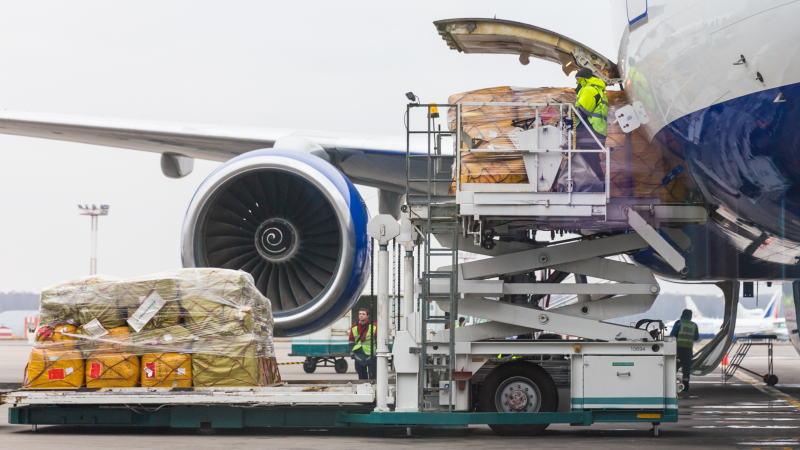As we approach 1 January 2025, it's crucial to understand the significant changes coming in the 66th edition of the IATA Dangerous Goods Regulations (DGR).
These regulations are vital for ensuring the safe transport of dangerous goods by air, protecting everyone involved – from shippers to passengers. They help mitigate risks associated with dangerous goods, which can pose serious safety threats if not handled properly.
The updates are based on the latest revisions to the UN Recommendations on the Transport of Dangerous Goods, commonly known as the Model Regulations or the Orange Book and the ICAO Technical Instructions.
Through our registered training organization, WiseTech Academy, we offer comprehensive dangerous goods courses that provide in-depth knowledge and practical skills tailored to the new ICAO and IATA regulations. Our specialized courses equip you and your team with the confidence to navigate the complexities of dangerous goods transport safely.
Ahead of 1 January 2025, let’s dive into some of the key DGR updates you’ll want to be aware of:
Section 1 – Applicability
- Expanded exceptions now cover data loggers and cargo tracking devices with installed lithium batteries attached to or placed in packages, overpacks or unit load devices, that are in use during transport. This is especially beneficial for those shipping temperature-sensitive products like pharmaceuticals.
- If you’re using devices powered by lithium cells containing no more than 1 g of lithium metal or with a Watt-hour rating not exceeding 20 Wh, these are excepted from the provisions of the Regulations.
- Just a reminder: devices must pass tests to ensure they don’t interfere with aircraft systems, and those with GPS/GSM capabilities need to have two independent shutdown methods when on board.
Section 3 – Classification
- Shippers, take note – you’ll now need to provide classification information to national authorities if they ask for it. But don’t worry – it’s within three months of transport.
- In terms of pathogen classification, the monkeypox virus (now called "mpox") will only be classified as Category A when in culture form. There’s a broader exception for pharmaceutical products, including vaccines containing GMOs/GMMOs, meaning those ready for administration are excepted from the Regulations. Plus, new provisions for sodium ion batteries will mirror those currently in place for lithium batteries.
Section 4 – Identification
- Be on the lookout for several new entries for dangerous goods, including sodium-ion batteries, lithium-ion battery-powered vehicles, and fire suppressant dispersing devices. There are also changes and additions to Special Provisions that affect how we identify and transport specific dangerous goods.
Section 5 – Packing
- Important updates here: the 75 kPa exception from the 95 kPa pressure differential for liquids has been expanded to include liquids in Class 9. Plus, Revised Packing Instruction 952 includes provisions for vehicles powered by lithium ion, lithium metal, and sodium ion batteries.
- Heads up - by 1 January 2026, any vehicle with lithium ion or sodium ion batteries over 100 Wh must be at a state of charge not exceeding 30% or have an indicated battery capacity not exceeding 25% when offered for transport. For 2025, it is recommended that the vehicles be offered for transport with the battery discharged to these levels. Similar changes will also apply to UN 3481 (Lithium-ion batteries packed with equipment). For 2025, it is recommended that the battery's charge state not exceed 30% of its rated capacity. This requirement will become mandatory starting 1 January 2026.
Section 7 – Marking and Labelling
- The lithium battery mark will now be called the “battery mark,” reflecting the inclusion of sodium ion batteries. The size and format of the mark will stay the same – just a name change. There is a similar change of name for the Class 9 lithium battery hazard label, which will become the lithium battery and sodium ion battery hazard label.
Section 8 – Documentation
- A three-month transitional period until 1 April 2025 has been established for shippers to comply with the new entry, UN 3556 (Vehicle, lithium-ion battery powered). During this period, these vehicles may still be offered for transport as UN 3171 (Battery-powered vehicle). This transition provides some breathing room for you to get everything in order.
Now that you’re in the loop, it’s essential to stay ahead of the curve and ensure compliance with these upcoming changes.
That’s where WiseTech Academy comes in. Our enrollment process is straightforward, and with courses available year-round, you can begin your training whenever it fits your schedule. Simply visit the WiseTech Academy website, select the dangerous goods course that aligns with your needs, and start learning at your own pace. Upon completion, you’ll earn a globally recognized certification, ensuring you remain compliant and continue to contribute to safe, reliable supply chain operations.
Don’t delay – empower your workforce with the essential training required to maintain safety and compliance in this dynamic environment. Explore WiseTech Academy's offerings today and enroll in a course that meets your needs.
